Transition Skateboarding – A Comprehensive Guide

Overview of Transition Skateboarding
Transition skateboarding, a dynamic and thrilling aspect of skateboarding, involves riding and performing tricks on ramps, bowls, and other curved surfaces. This discipline emphasizes smooth, flowing movements as skaters transition from one surface to another, showcasing their agility, balance, and creativity. Unlike street skateboarding, which focuses on flat surfaces and urban obstacles, transition skateboarding is about the fluid navigation of curved and vertical terrains.
Table of Contents
Importance and Relevance
Transition skateboarding holds a significant place in the skateboarding community due to its historical roots and the unique challenges it presents. It has evolved into a respected discipline with its own set of skills, techniques, and iconic figures. As skate parks continue to increase globally, transition skateboarding remains a vital and influential part of the sport, attracting new enthusiasts and seasoned veterans.
Evolution of Transition Skateboarding
Transition skateboarding traces back to the 1970s when skateboarders began exploring the possibilities of riding in empty swimming pools. This exploration quickly led to the development of purpose-built skate parks designed to cater specifically to the needs of transition skaters. Over the decades, the discipline has seen significant advancements in techniques, gear, and skatepark design, solidifying its place as a cornerstone of the skateboarding world.
History of Transition Skateboarding
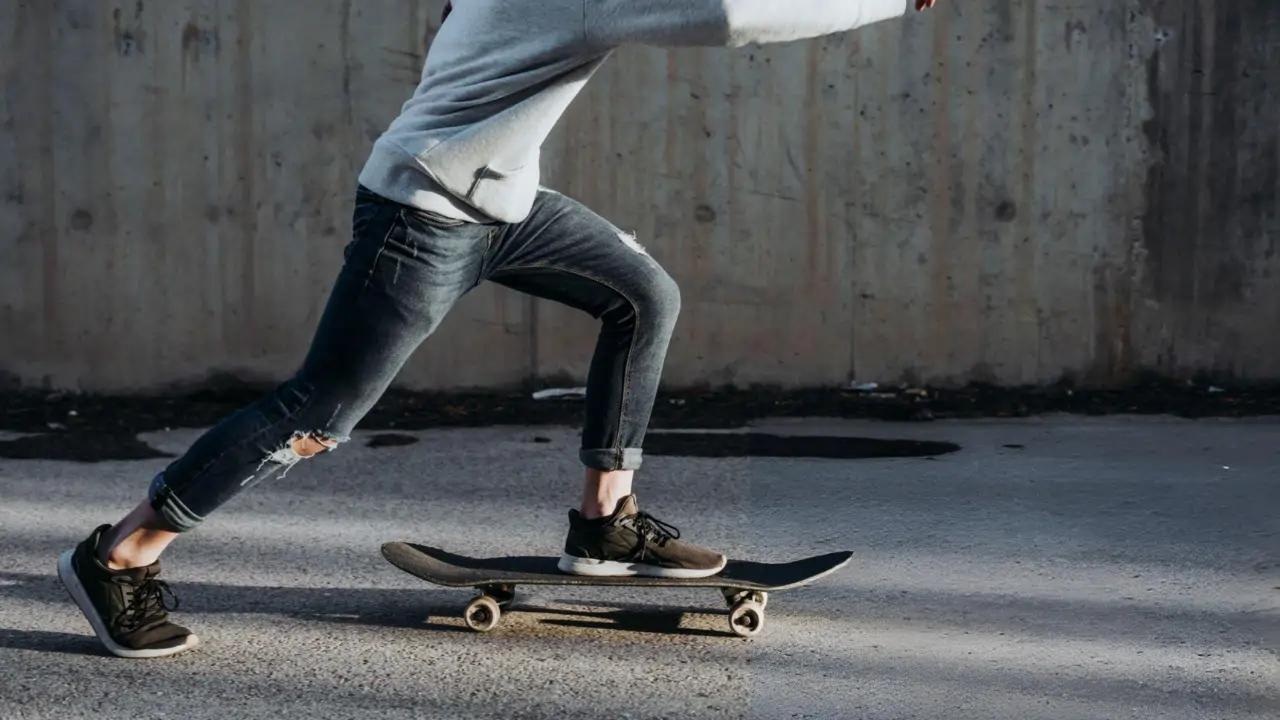
- Origins of Skateboarding
Skateboarding originated in the 1950s in California, inspired by surfers looking for a way to ride the streets when the waves were flat. Initially, skateboards were simple wooden boards with roller-skate wheels attached. This early form of skateboarding, known as “sidewalk surfing,” laid the groundwork for what would eventually become a diverse and complex sport. - Rise of Transition Skateboarding
The 1970s marked a pivotal moment in skateboarding’s history with the advent of urethane wheels, which provided better grip and smoother rides. Skateboarders began experimenting with riding in empty swimming pools, discovering the exhilarating possibilities of vertical and curved surfaces. This period saw the birth of transition skateboarding, characterized by its focus on flow and speed. - Influence of Skate Parks
The construction of the first skate parks in the late 1970s and early 1980s was a game-changer for transition skateboarding. These parks featured a variety of ramps, bowls, and half-pipes specifically designed to challenge and inspire skaters. As skate parks became more widespread, they played a crucial role in the growth and evolution of transition skateboarding, providing dedicated spaces for skaters to hone their skills and push the boundaries of the sport.
Types of Transition Skateboarding
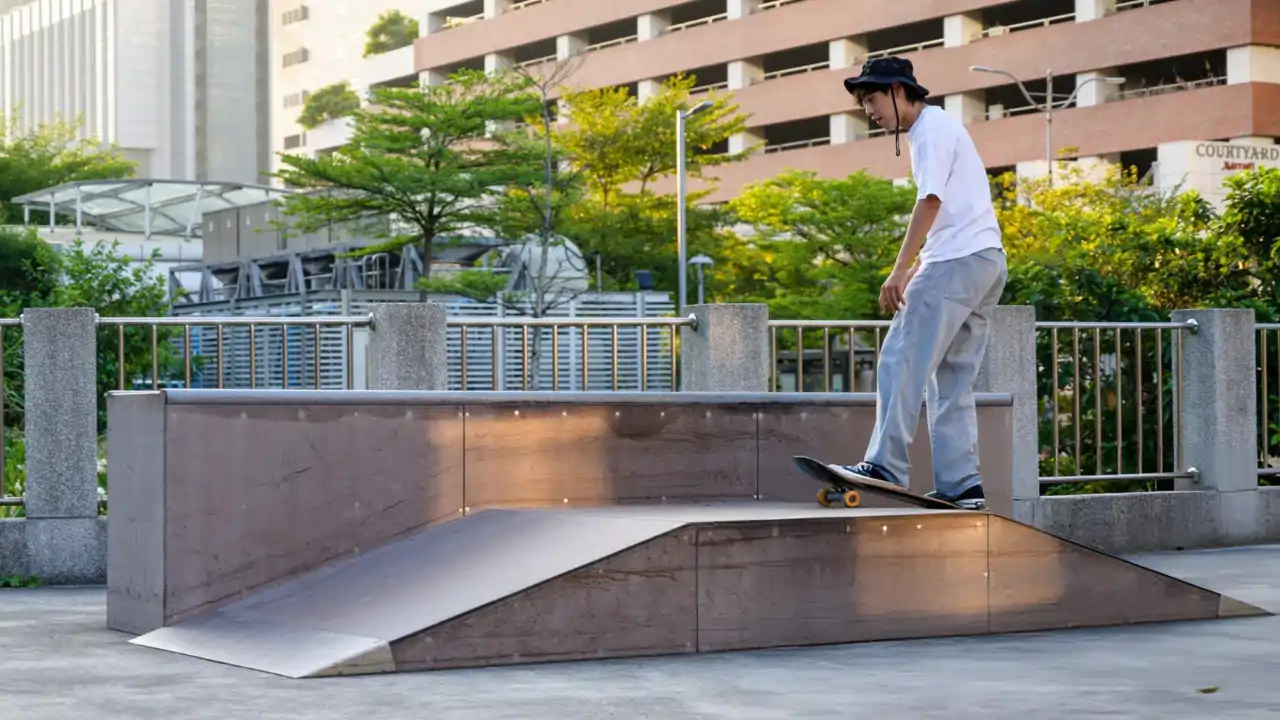
- Vert Skateboarding
Vert skateboarding involves riding and performing tricks on a vertical ramp or half-pipe. These ramps can range from 10 to 14 feet in height and require a high level of skill and bravery to master. Vert skaters focus on achieving high airs, complex flips, and technical lip tricks. - Bowl Skateboarding
Bowl skateboarding occurs in large, bowl-shaped structures that mimic the empty pools where the sport originated. Skaters use the curved walls to build speed and execute various maneuvers, from carving to aerial tricks. Bowls can vary in size and shape, offering diverse challenges for skaters. - Mini Ramp Skateboarding
Mini-ramp skateboarding is practiced on smaller, less intimidating ramps, typically between 3 to 6 feet tall. These ramps are ideal for beginners and intermediate skaters, providing a perfect platform to learn and perfect fundamental transition skills. Despite their smaller size, mini ramps allow various tricks and creative expression.
Essential Gear for Transition Skateboarding
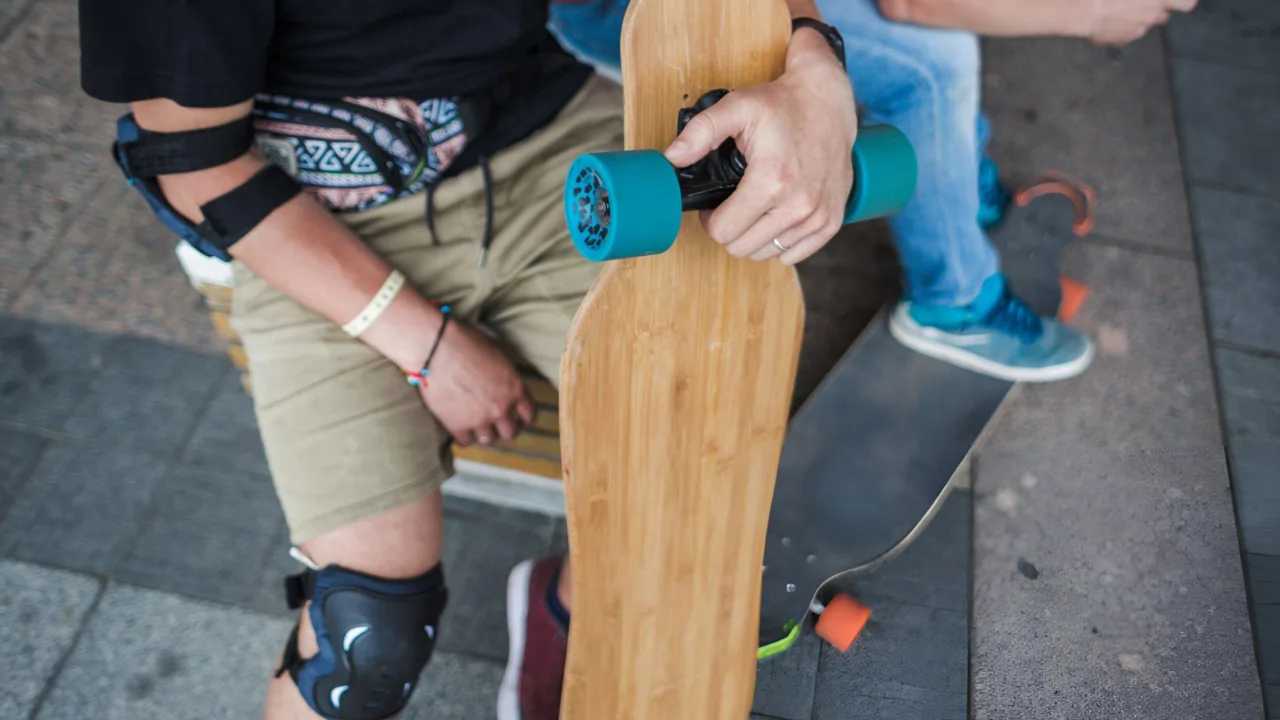
- Skateboards
A good skateboard for transition skateboarding typically features a more expansive deck (8.5 inches or more) for better stability and control. The trucks should be sturdy to withstand the impacts of vert and bowl skating, and the wheels should be more prominent and more complex to provide the necessary speed and grip. - Safety Gear
Safety gear is crucial in transition skateboarding due to the higher speeds and heights involved. Essential protective equipment includes a helmet, knee pads, elbow pads, and wrist guards. These items can prevent severe injuries and give skaters the confidence to push their limits. - Apparel and Footwear
Skate-specific apparel and footwear are designed to provide comfort, flexibility, and protection. Durable, high-top skate shoes offer ankle support and grip, while reinforced clothing can withstand the wear and tear of frequent falls and slides.
Techniques and Skills
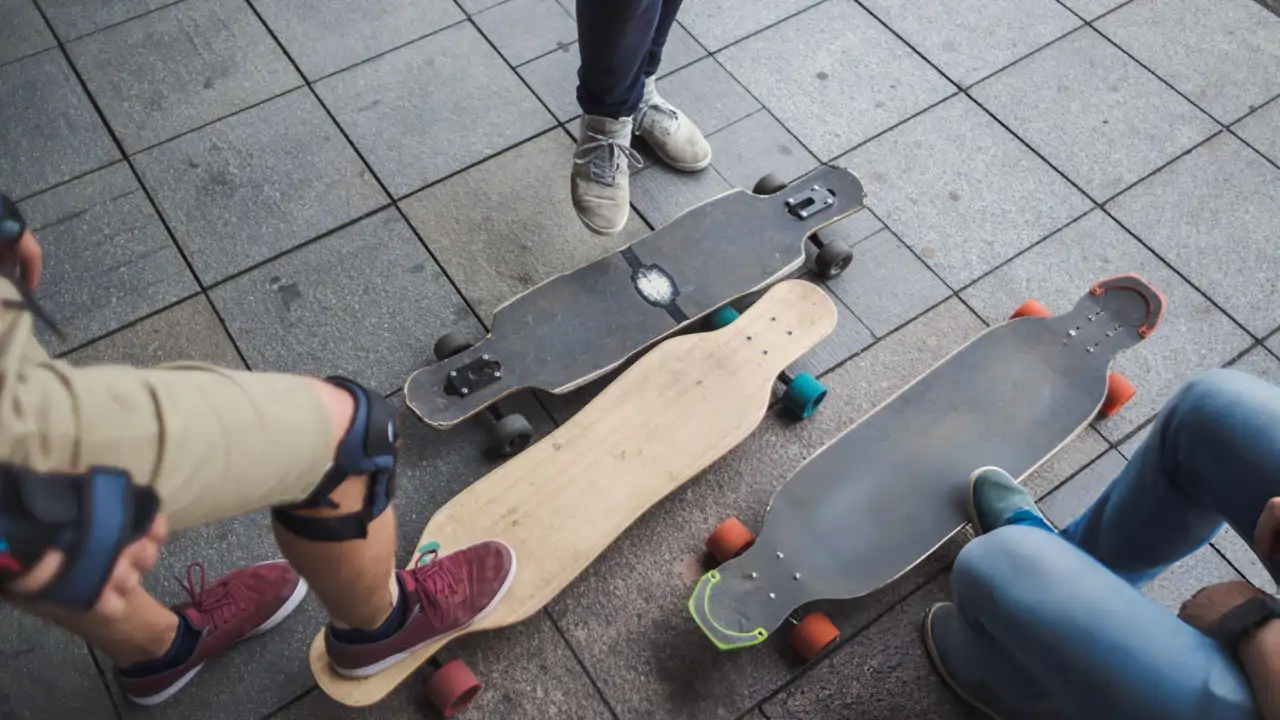
- Basic Techniques
Mastering the basics is essential for success in transition skateboarding. Fundamental techniques include dropping in, carving, and pumping. Dropping in involves starting from the top of a ramp and riding down into the transition while carving refers to making smooth, sweeping turns. Pumping is a technique for maintaining or gaining speed without pushing off the ground. - Advanced Maneuvers
Once the basics are mastered, skaters can progress to more advanced maneuvers such as airs, grinds, and slides. Airs involve launching off the ramp and catching air, while grinds and slides are performed on the coping (the edge of the ramp). These tricks require precise timing and control. - Tricks and Stunts
Transition skateboarding boasts many tricks and stunts, from classic moves like the kickflip and ollie to more complex tricks like the McTwist and 540. Each trick demands practice and perseverance, with skaters constantly pushing the boundaries of what is possible.
Training and Practice
- Finding the Right Spot
Choosing the right spot to practice is crucial for developing skills. Beginners should start with smaller ramps and bowls to build confidence and technique before moving on to more challenging structures. Local skate parks and designated practice areas are ideal for honing transition skills. - Structured Training Regimens
Structured training regimens can help skaters systematically improve their abilities. These regimens might include dedicated sessions for practicing specific tricks, strength conditioning exercises, and regular rest periods to prevent burnout and injury. - Common Mistakes to Avoid
Common mistakes in transition skateboarding include improper stance, insufficient speed, and lack of commitment. To avoid falls and injuries, skaters should focus on maintaining a low center of gravity, generating enough speed to complete tricks, and fully committing to each maneuver.
Benefits of Transition Skateboarding
- Physical Health Benefits
Transition skateboarding offers numerous physical health benefits, including improved cardiovascular fitness, muscle strength, and flexibility. The sport requires full-body engagement, enhancing balance, coordination, and physical endurance. - Mental Health Benefits
The mental health benefits of transition skateboarding are equally significant. The sport promotes focus, stress relief, and self-confidence. The sense of accomplishment from mastering new tricks and overcoming challenges can boost mental well-being and resilience. - Social Benefits
Transition skateboarding fosters a strong sense of community and camaraderie. Skaters often form close-knit groups, sharing tips, encouraging each other, and celebrating successes. This social aspect can enhance the skateboarding experience, making it more enjoyable and fulfilling.
Challenges and Risks
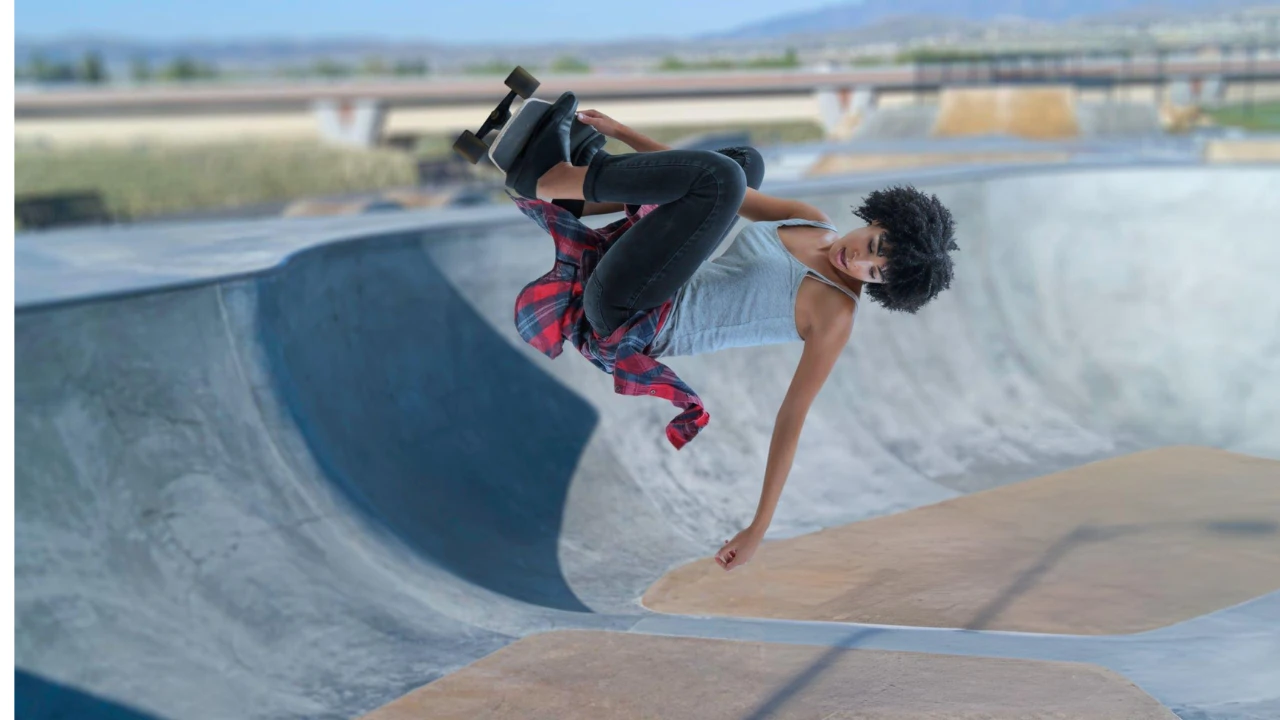
- Common Injuries
Common injuries in transition skateboarding include sprains, fractures, and concussions. These injuries often result from falls and collisions, underscoring the importance of wearing protective gear and practicing safe skating techniques. - Safety Precautions
Skaters should always wear appropriate safety gear to minimize risks, stay aware of their surroundings, and avoid overcrowded areas. Regularly inspecting equipment for wear and tear and maintaining a clean, obstacle-free skating environment are essential safety measures. - Overcoming Fear
Overcoming fear is a significant challenge in transition skateboarding. Skaters must gradually build confidence by starting with minor tricks and ramps before progressing to more complex maneuvers. Visualization techniques, positive reinforcement, and supportive peer groups can help skaters overcome their fears.
Famous Transition Skateboarders
- Tony Hawk
Tony Hawk, often dubbed the “Birdman,” is one of the most iconic figures in skateboarding history. Known for his innovative tricks and contributions to the sport, Hawk has inspired countless skaters worldwide. His legendary 900-degree spin remains one of the most celebrated achievements in skateboarding. - Bob Burnquist
Bob Burnquist is renowned for his creativity and fearless approach to vert skateboarding. He has consistently pushed the boundaries of the sport with his unique tricks and stunts, earning him a place among the greatest skateboarders of all time. - Bucky Lasek
Bucky Lasek is another prominent transition skateboarding figure known for his smooth style and technical prowess. With numerous X Games medals, Lasek has solidified his status as a top-tier skater, continuously inspiring the next generation of athletes.
Skate Parks Around the World
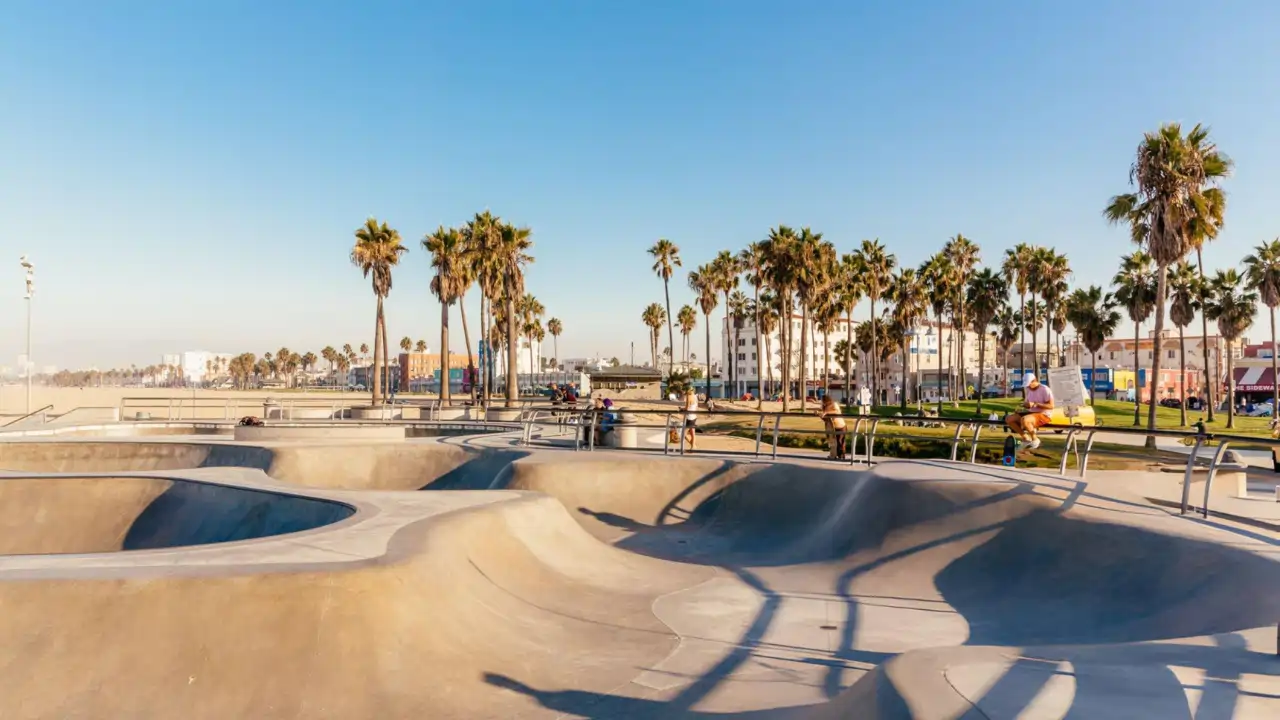
- Iconic Skate Parks in the USA
The United States is home to some of the most iconic skate parks, including the Venice Skatepark in California and the Burnside Skatepark in Oregon. These parks have become landmarks in the skateboarding community, attracting skaters from around the globe. - Notable Skate Parks in Europe
Europe boasts several notable skate parks, such as the Skatepark of Barcelona in Spain and the Southbank Skate Space in London. These parks are celebrated for their unique designs and vibrant skateboarding cultures. - Emerging Skate Parks in Asia
Asia is witnessing a rapid rise in skateboarding popularity, with emerging skate parks like the SMP Skatepark in Shanghai and the Skatepark of Tokyo. These parks are helping to cultivate a new generation of transition skateboarders in the region.
The Future of Transition Skateboarding
- Technological Innovations
Technological innovations are poised to shape the future of transition skateboarding. Advances in skateboard materials, protective gear, and skate park design make the sport more accessible and enjoyable for skaters of all levels. - Upcoming Trends
Upcoming trends in transition skateboarding include integrating digital technology, such as virtual reality training programs and innovative skateboards with built-in sensors. These innovations are expected to enhance the way skaters learn and perform tricks. - The Influence of Social Media
Social media continues to profoundly impact transition skateboarding, providing a platform for skaters to showcase their skills, connect with others, and gain exposure. Platforms like Instagram and TikTok drive the sport’s popularity, enabling skaters to share their journeys and inspire a global audience.
Community and Culture
- Skateboarding Subculture
The skateboarding subculture is characterized by its unique fashion, music, and art. Skaters often express their individuality through their clothing, skateboard designs, and choice of tricks, contributing to a vibrant and diverse community. - Skateboarding Events and Competitions
Skateboarding events and competitions, such as the X Games and the Dew Tour, play a crucial role in promoting the sport and showcasing top talent. These events provide opportunities for skaters to compete, network, and gain recognition. - Inclusivity in Skateboarding
Inclusivity is an important aspect of the skateboarding community, with increasing efforts to make the sport accessible to people of all genders, ages, and backgrounds. Initiatives such as female skateboarding leagues and adaptive skateboarding programs are helping to foster a more inclusive and welcoming environment.
Getting Started with Transition Skateboarding
- Choosing the Right Gear
Choosing the right gear is the first step in transitioning to skateboarding. Beginners should invest in a sturdy skateboard, high-quality safety gear, and comfortable skate shoes. Consulting with experienced skaters or visiting a specialized skate shop can provide valuable guidance. - Finding a Mentor or Coach
Finding a mentor or coach can accelerate learning and provide valuable insights. Experienced skaters can offer tips on technique, safety, and skate park etiquette, helping beginners build a strong foundation in transition skateboarding. - Joining Local Skateboarding Groups
Joining local skateboarding groups can provide a sense of community and support. These groups often organize practice sessions, events, and competitions, offering opportunities to learn, share experiences, and make new friends.
Frequently Asked Questions (FAQs)
What is transition skateboarding?
Transition skateboarding involves riding and performing tricks on curved surfaces such as ramps, bowls, and half-pipes. It emphasizes smooth, flowing movements and requires a combination of speed, agility, and balance.
How do I start transition skateboarding?
To start transitioning skateboarding, choose the right gear, find a suitable practice spot, and gradually build your skills. Joining a local skateboarding group and seeking guidance from experienced skaters can also be beneficial.
What gear do I need for transition skateboarding?
Essential gear for transition skateboarding includes a sturdy skateboard, protective equipment (helmet, knee pads, elbow pads, wrist guards), and skate-specific footwear. Wearing appropriate gear is crucial for safety and performance.
Are there any age restrictions for transition skateboarding?
Transition skateboarding is accessible to people of all ages. However, adults should always supervise younger skaters and wear full protective gear. Many skate parks offer beginner sessions and classes tailored to different age groups.
How can I prevent injuries while skateboarding?
To prevent injuries, always wear protective gear, practice proper techniques, and stay aware of your surroundings. Start with basic tricks and gradually progress to more advanced maneuvers. Regularly inspect your equipment and avoid skating in overcrowded or hazardous areas.
